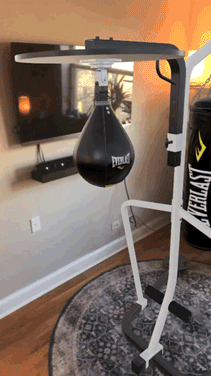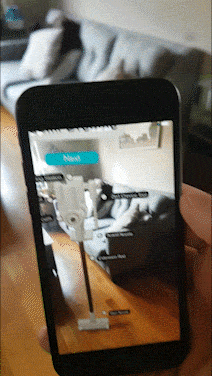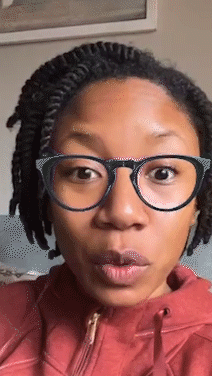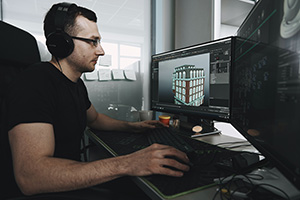TAILORED AR ECOMMERCE SERVICES
Are you looking to boost your online store conversions using augmented reality? Upreal Digital provides state-of-the-art augmented reality services that could help you double your conversion rate and reduce returns by up to 40%. As one of the top Montreal AR agency, our team of experts understands the ins and outs of how to transform your e-commerce website into an AR-enabled online store.
There are three ways we can help you increase conversion rate and reduce returns on your virtual store through AR.
1- PRODUCT VISUALIZATION
Augmented reality product visualization allows e-commerce customers to preview products within their own homes before purchasing. It’s handy for large products like gym equipment or items of furniture that might not fit everywhere.
One great example of a company that leveraged AR product visualization is IKEA. They built an AR app called IKEA Place that helps you visualize how their furniture will look inside your own home.
Since customers better understand what your product will look like, they are more likely to order. They are also less likely to return your product because they won’t be surprised when the package arrives at their doorstep.

Gym Equipment Product Visualization
Augmented reality can help your customers figure out how their future home gym equipment will fit in their tiny apartment.
Therefore, it can reduce the numbers of returns by up to 40% since customers have a better idea of how the equipment will fit.
(Source: Shopify)
We’ve built that product visualization of the punching bag gym equipment. We can do something similar for your product as well.
2- PRODUCT WALK-THROUGH
Sometimes just showing an inanimated product does not tell the whole story.
That’s why we also offer product walk-through interactive experiences. With those, you can explain step by step complex ideas like showing how to clean a vacuum or how to do the initial product setup.
No more clients leaving you bad reviews, complaining about the complicated product installation process.

Vacuum Parts - Xiaomi Dreame V9
Certain aspects of your physical product can only be adequately explained using augmented reality.
We’ve built this 3D product instructions walk-through of the vacuum cleaner Xiaomi Dreame V9.
In the experience, you can get a visual overview of the different parts of the product and instructions on how to install its docking station to the wall.
You also see the different parts that make up the vacuum cleaner.
3- VIRTUAL TRY-ON
Virtual try-on experiences only make sense if you sell products that you customers can wear, like eyewear, cosmetics, shoes, or clothes. It’s a game-changer and makes it possible for consumers to have a more personalized and realistic shopping experience directly from the comfort of their own homes. AR try-on utilizes the front-facing camera on phones, allowing shoppers to virtually try-on products before buying them.
Augmented reality try-on is reinventing the way people shop online because of a simple fact. It makes them engaged during the buying process! Because of its immersion, it can boost the conversions rate.
Also, virtual try-on helps your customers get a better understanding of your product. This newly acquired knowledge helps them make a more informed decision when buying your product. Thus helping reduce those costly product returns.

Warby Parker Example
Warby Parker has an augmented reality app that allows its customers to try on glasses online digitally.
It’s excellent because the retailer does not need to stock all of its inventory in its stores.
It also gives their customers a way to quickly take pictures of themselves while trying on glasses and then share those pictures with friends.
We did not build this app, but we wanted to share it anyway because it’s a fantastic example of AR try-on.
OUR PROCESS
Before delivering any AR services, our first step is to analyze your online shop. At this step, our goal is to understand how we can best utilize augmented reality within the context of your specific industry.
For example, let’s say your shop sells a vast collection of couches with different fabrics and colors. One approach could be to make one 3D object per couch and a UI that would allow the user to customize it by selecting the desired color and fabric. That way, we can reduce the work involved in the 3D model modeling process. That method would also allow the user to see multiple variations of the same couch without leaving the AR experience each time.

Once we have analyzed your website, we’ll let you know what we think would be the best strategy moving forward to bring your e-commerce site to the next level using AR. You are the expert in your industry so planning the best AR strategy requires a bit of communication to identify and resolve your industry-specific pain points.
Our AR agency will start the 3D modeling process as soon as we have established an excellent strategy for your online store. To get started, we’ll need from you a couple of photos from different directions of each product you wish to build in 3D. Understandably, if you don’t want to take those photos yourself, we’ll send one of our experts to take care of that for you.

While the 3D modeling process is in the works, we’ll also get started on the other visual elements part of the WebAR experience, such as the web-based UI. The UI can also live in the 3D world for a more immersive feel. This step is optional and depends on each project.
If needed, we then work on the overall interactivity of the AR experience. At this stage, we’ve built each part of the project separately, so we start combining all of them into one.
The last step is to test the different components that make up the AR experience.
Once that’s done, your virtual try-on experience is ready to go live!
